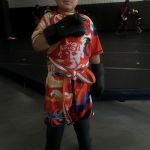Welcome to Fuzion Martial Arts
Brazilian Jiu Jitsu
Fuzion is proudly affiliated with Solecki Jiu-Jitsu, giving our students access to proven systems, up-to-date techniques, and a coaching network focused on delivering the highest-quality classes possible. Training Jiu-Jitsu builds real-world self-defense skills, boosts fitness and mobility, sharpens problem-solving under pressure, and grows confidence and community. Whether you’re an experienced practitioner or a beginner, we’re here to guide you on your martial arts journey—step by step, roll by roll.

FUZION KICKBOXING
Fuzion Kickboxing is a hybrid striking system that blends the style of Dutch Kickboxing with the power of Muay Thai. Fuzion’s Kickboxing emphasizes high-quality training and the most current, evidence-based coaching methods. Our program is designed to develop well-rounded martial artist who excel in timing, movement, and striking efficiency, whether they’re training for competition or personal growth.

Trusted By Our Members
Schedule
Schedule
Family Jiu Jitsu NO GI
5 - 5:45pmFamily Jiu Jitsu NO GI
Family Kickboxing
5:45 - 6:30pmFamily Kickboxing
Jiu Jitsu (Teens & Adults) NO GI
6:30 - 7:30pmJiu Jitsu (Teens & Adults) NO GI
Family Kickboxing
5:30 - 6:15pmFamily Kickboxing
Family Jiu Jitsu GI
6:15 - 7pmFamily Jiu Jitsu GI
Family Jiu Jitsu NO GI
5 - 5:45pmFamily Jiu Jitsu NO GI
Family Kickboxing
5:45 - 6:30pmFamily Kickboxing
Jiu Jitsu (Teens & Adults) NO GI
6:30 - 7:30pmJiu Jitsu (Teens & Adults) NO GI
Family Kickboxing
5:30 - 6:15pmFamily Kickboxing
Family Jiu Jitsu GI
6:15 - 7pmFamily Jiu Jitsu GI
Family Kickboxing Sparring
5:30 - 6pmFamily Kickboxing Sparring
Family Jiu Jitsu Open Mat
6 - 6:30pmFamily Jiu Jitsu Open Mat
TRY A FREE CLASS
Thank you! We will be in touch shortly.



